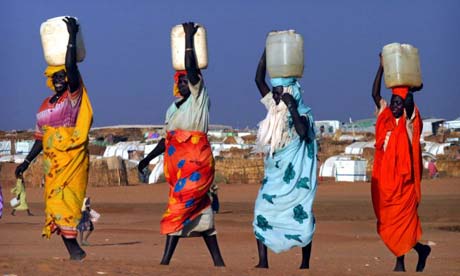The
Sahara Desert is the world's largest hot desert and is spread across 8.6
million square kilometers in Northern Africa. The average year round
temperature in Sahara exceeds 30°C with the temperatures rising above 50 degree
centigrade during summers and the winter temperatures falling below freezing
point. With the daily temperature variation fluctuating anywhere between the
values -0.5 to 37.5 degree centigrade, the conditions are really harsh and
difficult to sustain life and this condition is further deteriorated due to the
hot, dusty winds.
The high temperatures during summer, scanty
rainfall, and freezing winters, along with the severely dry weather make
Sahara's weather very inhospitable. As a result, plant and animal population is
sparse.
Plants
and animals develop certain adaptations in order to adapt to life in the harsh
desert conditions.
Desert
plants possess very long roots that penetrate very deep into the earth, and
their broad leaves are replaced with spines, and thick green stems in desert
plants like cactus where the spines help in preventing excessive water loss
while the stem performs photosynthesis as well as holds water for a very long
time.
Xerophytes,
grasses, shrubs, and trees comprise the common vegetation in the Sahara desert.
Desert
animals rarely come out in the hot sun and instead stay underground during most
part of the day and eat such foods which contain a lot of water content. The
desert animals are also smaller in size which minimizes water loss from their
bodies.
The
animal species found in the Sahara include the desert hedgehog, gerbil, jerboa,
cape hare, common jackal, dorcas gazelle, oryx, dama deer, Nubian wild, barbary
sheep, anubis baboon, spotted hyena, sand fox, Libyan striped weasel, the slender
mongoose, rattlesnakes, kangaroo rats, kit foxes and numerous species of frogs,
toads, crocodiles, lizards, chameleons, skinks, cobras snails, brine and algae
shrimps.
Article Source: http://EzineArticles.com/808615




















